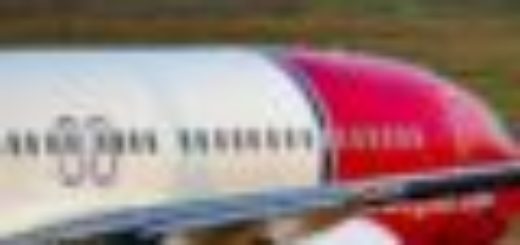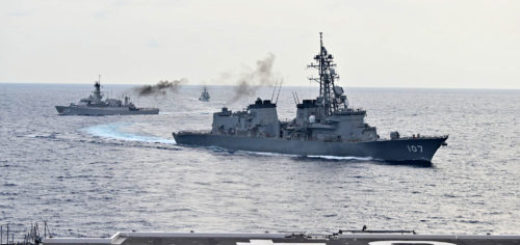Russia’s second prototype of Yak-130M combat jet trainer has been completed
{loadposition bannertop}
{loadposition sidebarpub}
Yakovlev rolled out the modernized Yak-130M and initiated ground and flight test activities at the Irkutsk Aviation Plant, while confirming the second prototype and an additional airframe in assembly. The upgrade adds radar, electro-optics, and a defensive suite to extend the trainer’s capabilities into light strike and air policing, a niche that many air forces are watching for cost-effective operations.
Russia’s state conglomerate Rostec said the first Yak-130M prototype is ready for trials at Irkutsk, the United Aircraft Corporation’s key production site, with the program targeting around-the-clock operations in adverse weather. Two weeks later, UAC communications highlighted that Yakovlev had completed a second prototype and that a third airframe is in work, keeping pace with the three-ship test plan first flagged around the ARMY-2024 forum. The M variant adds the BRLS-130R radar, a SOLT-130K electro-optical sensor, the President-S130 self-protection suite, and the KSS-130 communications complex, all aimed at improving detection, accuracy, and survivability while preserving the core training role.Follow Army Recognition on Google News at this link
The Yak-130M derives from the Yak-130, whose digital architecture and avionics already support the preparation of crews for fourth and fifth-generation fighters (Picture source: Yakovlev)
The Yak-130M’s trajectory follows the rationale already outlined by Rostec in early October, when the prototype was declared ready for trials and two additional airframes were reported on the Irkutsk line. The upgrade pursues a dual objective: strengthening export appeal and extending the platform’s suitability for light strike and air policing missions by day and night in all weather. The evolution rests on integrating a BRLS-130R radar, a SOLT-130K electro-optical sensor, the President-S130 self-protection suite, and the KSS-130 communications complex. Taken together, these systems aim to expand the detection envelope, improve weapon accuracy, and increase survivability against surface-to-air and air-to-air threats.
The Yak-130M derives from the Yak-130, whose digital architecture and avionics already support the preparation of crews for fourth and fifth-generation fighters. Propulsion uses two AI-222-25 turbofans, each rated at 2,500 kgf for takeoff, a configuration known for climb performance and sustained g-load handling, useful when emulating flight regimes of current multirole aircraft. The airframe carries up to 3,000 kg on nine hardpoints, allowing a mix of guided and unguided munitions, targeting pods, external tanks, and jammers. This loadout, already validated on the baseline version, is essential for confirming the air-to-surface and air-to-air employment profiles of the modernized variant. Rostec’s declared concept of use also includes air-to-air weapons and air-to-surface effects guided by satellite and laser, with operations conducted around the clock in degraded weather.
The Yak-130M’s sensors and links are designed to feed a robust and usable tactical picture. The BRLS-130R is intended to provide all-weather surveillance, including against low-signature targets such as mini-class drones at short range, while the SOLT-130K combines TV, IR, and laser rangefinding for passive acquisition and designation. This is useful under EMCON when the crew limits emissions. Integration of the President-S130 seeks to reduce vulnerability to MANPADS and engagement radars by coupling warning receivers, decoys, and countermeasures. The KSS-130 provides updated voice and data communications that support insertion into a national RMP/COP and improve interoperability alongside heavier weapon systems. Detailed parameters such as radar range, aiming aids, and ECM resistance are not publicly specified, but the design philosophy is clear: a training platform that can shift on demand to precise kinetic effects with tight logistic overhead.
At the tactical and operational level, the Yak-130M fills a practical niche. Its endurance and comparatively low flight-hour cost make it a candidate for close air support in permissive environments, light air defense patrols, convoy escort, and counter-drone tasks when the tempo demands constant presence. With nine stations and 3,000 kg of stores, it can combine short-range air-to-air missiles for self-protection, laser- or satellite-guided munitions for opportunity strikes, and reconnaissance pods to build a dynamic COP at local theater scale. The aircraft nonetheless depends on close coordination with external sensors, notably MALE ISR and ground-based radars, to extend its detection bubble and avoid prolonged exposure to medium and long-range air defenses. In a network-centric setup, it delivers a high sortie rate at controlled cost, useful for advanced training, sustaining operational rhythm, and, when required, attriting lightly defended targets.
The program’s relevance extends beyond training. On the export side, Moscow targets air forces seeking an advanced trainer convertible to light attack with limited offset requirements and a comparatively simple maintenance base. Rostec frames the M variant as a response for customers who do not intend to acquire heavier and more expensive aircraft and prefer a gradual capability build-up while keeping compatibility with existing arsenals. Russia leverages the existing Yak-130 fleet and established Rosoboronexport channels, positioning itself against competing offers in the lead-in fighter trainer and light attack segment. Strategically, the Yak-130M’s progress comes as high and medium-intensity conflicts renew interest in cost-controlled aircraft able to sustain ISR-strike cycles. It may, over time, shape acquisition choices in Central Asia, the Middle East, and among some BRICS partners, while complicating the management of conventional arms control and sanctions regimes. European states and NATO track these dynamics closely in light of technology transfers and regional interoperability effects.

{loadposition bannertop}
{loadposition sidebarpub}
Yakovlev rolled out the modernized Yak-130M and initiated ground and flight test activities at the Irkutsk Aviation Plant, while confirming the second prototype and an additional airframe in assembly. The upgrade adds radar, electro-optics, and a defensive suite to extend the trainer’s capabilities into light strike and air policing, a niche that many air forces are watching for cost-effective operations.
Russia’s state conglomerate Rostec said the first Yak-130M prototype is ready for trials at Irkutsk, the United Aircraft Corporation’s key production site, with the program targeting around-the-clock operations in adverse weather. Two weeks later, UAC communications highlighted that Yakovlev had completed a second prototype and that a third airframe is in work, keeping pace with the three-ship test plan first flagged around the ARMY-2024 forum. The M variant adds the BRLS-130R radar, a SOLT-130K electro-optical sensor, the President-S130 self-protection suite, and the KSS-130 communications complex, all aimed at improving detection, accuracy, and survivability while preserving the core training role.
Follow Army Recognition on Google News at this link
The Yak-130M derives from the Yak-130, whose digital architecture and avionics already support the preparation of crews for fourth and fifth-generation fighters (Picture source: Yakovlev)
The Yak-130M’s trajectory follows the rationale already outlined by Rostec in early October, when the prototype was declared ready for trials and two additional airframes were reported on the Irkutsk line. The upgrade pursues a dual objective: strengthening export appeal and extending the platform’s suitability for light strike and air policing missions by day and night in all weather. The evolution rests on integrating a BRLS-130R radar, a SOLT-130K electro-optical sensor, the President-S130 self-protection suite, and the KSS-130 communications complex. Taken together, these systems aim to expand the detection envelope, improve weapon accuracy, and increase survivability against surface-to-air and air-to-air threats.
The Yak-130M derives from the Yak-130, whose digital architecture and avionics already support the preparation of crews for fourth and fifth-generation fighters. Propulsion uses two AI-222-25 turbofans, each rated at 2,500 kgf for takeoff, a configuration known for climb performance and sustained g-load handling, useful when emulating flight regimes of current multirole aircraft. The airframe carries up to 3,000 kg on nine hardpoints, allowing a mix of guided and unguided munitions, targeting pods, external tanks, and jammers. This loadout, already validated on the baseline version, is essential for confirming the air-to-surface and air-to-air employment profiles of the modernized variant. Rostec’s declared concept of use also includes air-to-air weapons and air-to-surface effects guided by satellite and laser, with operations conducted around the clock in degraded weather.
The Yak-130M’s sensors and links are designed to feed a robust and usable tactical picture. The BRLS-130R is intended to provide all-weather surveillance, including against low-signature targets such as mini-class drones at short range, while the SOLT-130K combines TV, IR, and laser rangefinding for passive acquisition and designation. This is useful under EMCON when the crew limits emissions. Integration of the President-S130 seeks to reduce vulnerability to MANPADS and engagement radars by coupling warning receivers, decoys, and countermeasures. The KSS-130 provides updated voice and data communications that support insertion into a national RMP/COP and improve interoperability alongside heavier weapon systems. Detailed parameters such as radar range, aiming aids, and ECM resistance are not publicly specified, but the design philosophy is clear: a training platform that can shift on demand to precise kinetic effects with tight logistic overhead.
At the tactical and operational level, the Yak-130M fills a practical niche. Its endurance and comparatively low flight-hour cost make it a candidate for close air support in permissive environments, light air defense patrols, convoy escort, and counter-drone tasks when the tempo demands constant presence. With nine stations and 3,000 kg of stores, it can combine short-range air-to-air missiles for self-protection, laser- or satellite-guided munitions for opportunity strikes, and reconnaissance pods to build a dynamic COP at local theater scale. The aircraft nonetheless depends on close coordination with external sensors, notably MALE ISR and ground-based radars, to extend its detection bubble and avoid prolonged exposure to medium and long-range air defenses. In a network-centric setup, it delivers a high sortie rate at controlled cost, useful for advanced training, sustaining operational rhythm, and, when required, attriting lightly defended targets.
The program’s relevance extends beyond training. On the export side, Moscow targets air forces seeking an advanced trainer convertible to light attack with limited offset requirements and a comparatively simple maintenance base. Rostec frames the M variant as a response for customers who do not intend to acquire heavier and more expensive aircraft and prefer a gradual capability build-up while keeping compatibility with existing arsenals. Russia leverages the existing Yak-130 fleet and established Rosoboronexport channels, positioning itself against competing offers in the lead-in fighter trainer and light attack segment. Strategically, the Yak-130M’s progress comes as high and medium-intensity conflicts renew interest in cost-controlled aircraft able to sustain ISR-strike cycles. It may, over time, shape acquisition choices in Central Asia, the Middle East, and among some BRICS partners, while complicating the management of conventional arms control and sanctions regimes. European states and NATO track these dynamics closely in light of technology transfers and regional interoperability effects.






